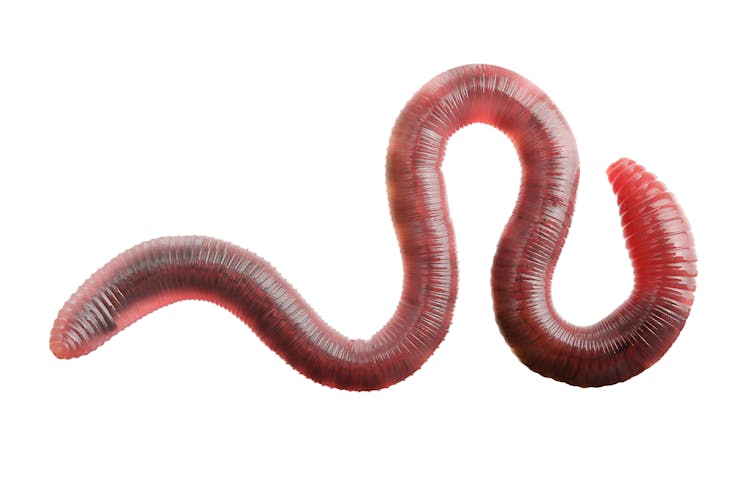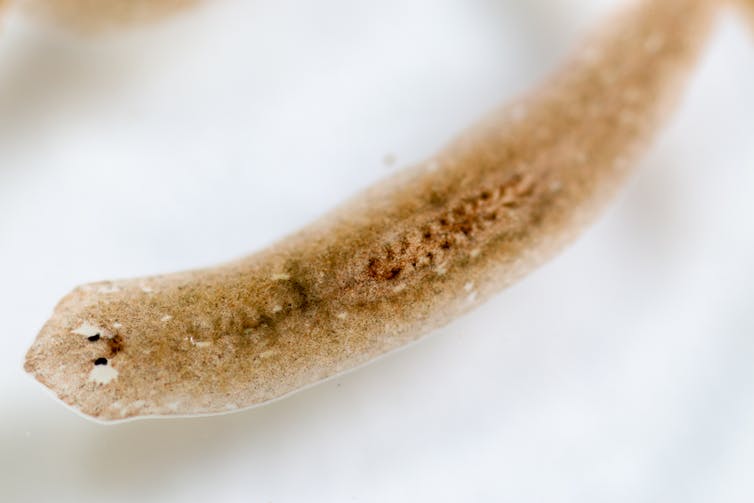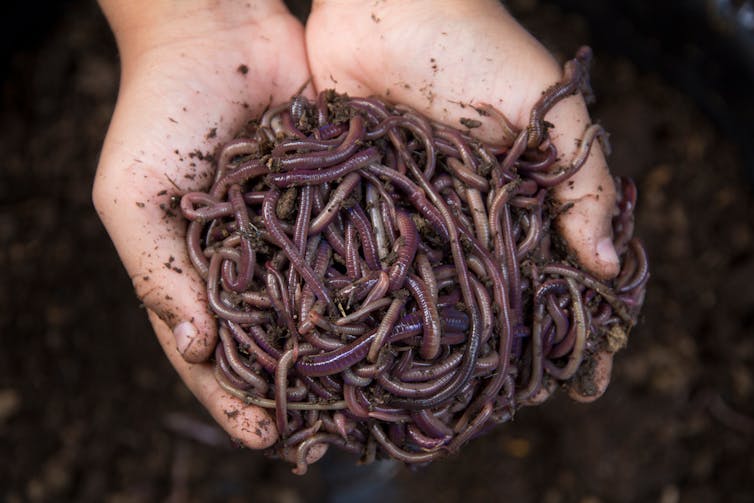Curious Kids: Do worms have blood? And if so, what colour is it?
- Written by Mark Sandeman, Honorary Professor, Federation University Australia
Do worms have blood, and if they do, what colour is it? Momo Bice, aged 9, Carlton
Hi Momo. Well, the short answer to your question is: yes. Many worms do have blood, and it is either colourless or pink, or red, or even green! But to answer your question properly, first we need to decide what type of worm we are talking about.
There are lots of different sorts of worms. Generally, a worm is any long, thin animal that does not have a backbone, but scientifically we recognise three types of worms: flatworms, roundworms and segmented worms. Worms live in the sea, in sand and soil. Some live inside plants or animals, and we call them parasites.
So let’s look at what blood you might find inside these different types of worms.
 Worms live in sea, sand soil, or – if we’re unlucky – even inside us.
Shutterstock
Worms live in sea, sand soil, or – if we’re unlucky – even inside us.
Shutterstock
The three worm types
Flatworms: These include tapeworms, which are parasites (meaning they live on a host organism), and planaria, which live in ponds and lakes. These animals are so flat they don’t even need blood. They absorb oxygen through their skin and it spreads directly to every cell in their body. As a result they are pretty much colourless, or whitish.
Roundworms: Also called nematodes, these worms are mainly found in soil. Roundworms can also live as parasites in humans, causing really nasty effects such as blindness and brain defects. One large roundworm that lives in the intestines of humans can grow to more than 35 centimetres – that’s longer than a standard ruler!
As the name suggests, roundworms are tube-shaped. Their body cavity contains fluid that delivers oxygen to its organs. But this fluid is not called blood, because it does not circulate around the body.
Read more: What are parasites and how do they make us sick?
Most roundworm species are very small, and so can diffuse oxygen through their skin to all parts of their body. But very large roundworms can’t do this as easily, especially when they live inside animals where there is not much oxygen. These large worms use an oxygen-carrying molecule called haemoglobin – more on that in a minute.
Segmented worms: These worms include earthworms, leeches and marine worms. Also known as annelids, the bodies of segmented worms are divided by grooves into a series of segments. Most have circulatory systems – that is, blood vessels and a heart that pumps blood around the body.
 Flatworms have no body cavity.
Shutterstock
Flatworms have no body cavity.
Shutterstock
So what colour is the blood?
The colour of blood in any animal is determined by the molecule that carries oxygen and other gases in and out of the body. If the molecule uses iron to carry the oxygen, then the blood is usually red. If it uses copper, the blood is usually blue. But these molecules can also be green and pink.
All these colours except blue are found in worms. Haemoglobin is the most common oxygen-carrying molecule, including in worms. Haemoglobin contains iron, which means most worm blood – including that of earthworms and leeches – is red.
Read more: Curious Kids: why do leeches suck our blood?
Some segmented worms use a different oxygen-carrying molecule called chlorocruorin. The blood of these worms can be either green or red.
One group of segmented marine worms has pink blood. This is because the molecule that carries the oxygen is a type of blood pigment, known as hemerythrin, which is described as pink or purple.
A few species of segmented worms don’t have any oxygen-carrying molecules at all, so their blood is colourless.
So, the answer to your question is that all segmented worms have blood, while roundworms and flatworms do not. The blood colour depends on the molecule that carries oxygen in that worm. And most worms have red blood, just like us!
 There are three worm types, and not all have blood.
Shutterstock
There are three worm types, and not all have blood.
Shutterstock
Authors: Mark Sandeman, Honorary Professor, Federation University Australia
Read more https://theconversation.com/curious-kids-do-worms-have-blood-and-if-so-what-colour-is-it-147578





